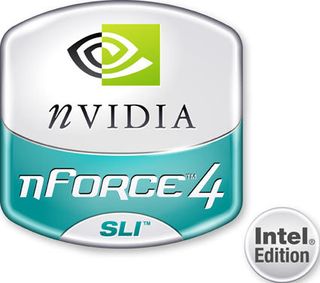NVIDIA nForce4 Intel Edition Sets Its Sights on Intel 925XE
nForce4 Intel Edition Kicking Intel's 925XE

Having made a name for itself in the core logic business, NVIDIA is taking the next step by finally announcing its long-anticipated chipset for the Intel platform.
On November 19, 2004, Intel and NVIDIA signed a cross-licensing agreement, enabling both companies to comprehensively exchange technology. For NVIDIA, this was a major step, since it opened the door to provide Intel platform core logic with the well-known nForce brand.
The correct name for the chipset is the "nForce4 (Intel Edition)", which we think is a reasonable choice (we abbreviate it as "nForce4 IE" in this article). The name nForce5, as many publications assumed the chipset would be called, would have implied this is something clearly superior to the Athlon nForce4 chipset. This isn't the case, though there are in fact some improvements. The fundamental difference is caused by the memory controller being part of the core logic in the Intel architecture. As a result, NVIDIA had to move away from the single-chip design, which, in turn, left some room for enhancements to the individual components.
NVIDIA is eager to establish SLI dual graphics on as many systems as possible, from the high-end to the mainstream. However, it knows very well that even though the nForce4 IE targets only the high-end, the graphics differentiator will not be enough to compete with Intel. After all, the chip giant has managed to bring very consistent product quality to core logic over the course of many years. Hence, the only way to beat Intel is to beat its products where they are best, with high-performance, flexible memory interfaces and storage subsystems.
Okay, let's stop talking theory and get into practical detail now.
Stay on the Cutting Edge
Join the experts who read Tom's Hardware for the inside track on enthusiast PC tech news — and have for over 25 years. We'll send breaking news and in-depth reviews of CPUs, GPUs, AI, maker hardware and more straight to your inbox.
Current page: nForce4 Intel Edition Kicking Intel's 925XE
Next Page nForce4 Intel Edition In DetailMost Popular

